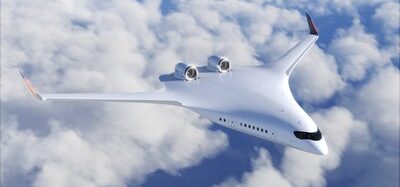AeroParker helps airports in their commitment to carbon neutrality
- Like
- Digg
- Del
- Tumblr
- VKontakte
- Buffer
- Love This
- Odnoklassniki
- Meneame
- Blogger
- Amazon
- Yahoo Mail
- Gmail
- AOL
- Newsvine
- HackerNews
- Evernote
- MySpace
- Mail.ru
- Viadeo
- Line
- Comments
- Yummly
- SMS
- Viber
- Telegram
- Subscribe
- Skype
- Facebook Messenger
- Kakao
- LiveJournal
- Yammer
- Edgar
- Fintel
- Mix
- Instapaper
- Copy Link
Posted: 23 May 2016 | AeroParker | No comments yet
There has been an ever increasing pressure on airports to implement more eco-friendly measures. Not only does the responsibility of greener approaches create a clearer message to passengers, it’s also an opportunity for new business developments within future airport plans.




There has been an ever increasing pressure on airports to implement more eco-friendly measures. Not only does the responsibility of greener approaches create a clearer message to passengers, it’s also an opportunity for new business developments within future airport plans.
So where does AeroParker; an ecommerce platform that enables airports to sell car parking and other ancillaries directly to passengers before they arrive at the airport, fit in creating greener airports? Well more of that later firstly some facts:
- The Community Observatory on Airport Capacity (COAC), reported that up to 50% of an airport’s carbon footprint can be due to passenger access – in other words landside.
- Moreover, The European Commission implemented a strategy (Transport 2050) which through its aims should dramatically reduce carbon emissions in transport by 60% by 2050. This is going to be a challenge in view of the expected air traffic growth with the National Air Traffic Services forecasting that air traffic in countries like the UK will increase by 45%, which will undoubtedly have an enormous impact on the environment.
- There is a programme named, Airport Carbon Accreditation, launched by Airports Council International (ACI), which aims to encourage and recognise airports that are ambitious with carbon management efforts around the world. There are 4 levels of certification within the framework.
With these facts outlined, we now return to where does Pre book parking fit with an airport moving towards carbon neutrality?
155 airports worldwide have Airport Carbon Accreditation
Carbon Management at airports is about CO2 emissions, understanding CO2 levels and moving towards carbon neutrality. To date, in respect of Airport Carbon Accreditation, 155 airports worldwide are certified at one of the four ascending levels of the programme (mapping, reduction, optimisation, and neutrality), representing 32.6% of worldwide passenger traffic. At the optimisation and neutrality levels, airports are required to take into account emissions produced by third parties at an airport – which usually covers passenger access. Reducing emissions stemming from passenger access can thus help airports become certified at the highest levels of the programme.
Reducing emissions stemming from passenger access can help airports become certified
The key is that Pre-booking parking passengers are only making one trip to the airport’s car park, and another trip on their return when they exit the car park. Whereas both taxis and vehicles performing kiss and fly drop off for example make 4 journeys in transporting a passenger to and from the airport. Whilst saving time and reducing traffic, pre book parking drivers are lowering the airport’s carbon producing journeys by 50% as they are making half of the commutes to and from the airport’s landside area compared with taxis and kiss and fly.
20% of passengers in the UK take a taxi to the airport
On average 20% of passengers in the UK take a taxi to the airport (CAA, 2015). This means for an airport of 5 million O &D passengers there would be 1 million taxi drop journeys per annum. With an average journey of 65Km to and from an airport by car or taxi and with an average of 121.3g/Km of CO2 emitted by a newly registered UK car, (DVLA/DfT, 2015) the math’s is simple. If an airport of 5 million O &D passengers could convert 1% of taxi journeys or kiss and fly drop offs to pre book parking this would be equivalent to 10,000 journeys.
Kg of CO2 from 10,000 average taxi or kiss and fly journeys dropping and picking up at an airport | Kg of CO2 from 10,000 average journeys for a pre book parked car to and from the airport |
315.3 tonnes of CO2 | 157.6 tonnes of CO2 |
AeroParker enables an airport to incentivise passengers to convert their mode of transport to the airport from taxi or kiss and fly to pre book parking. And for every 10,000 journeys that are converted then an average of 157.6 tonnes of CO2 is saved.
For every 10,000 journeys 157.6 tonnes of CO2 is saved
To put that into perspective that is enough CO2 to power a 13-watt CF lightbulb for 1,384 years continuously! (YouSustain, 2016)
AeroParker, is an airport e-commerce platform for the advance sales of car parking to passengers alongside cross-selling of lounges and fast track security, distribution of promotions and bundling of 3rd party ancillaries all in a single basket. It is cloud-hosted and currently handles millions of transactions per annum under independently verified Level 1 PCI compliance.
“If we can cut the number of trips made in and around the landside area of an airport by even a fraction, the difference in our clients carbon footprint is meaningful”
Jon Keefe, CEO AeroParker, said: “If we can cut the number of trips made in and around the landside area of an airport by even a fraction, the difference in our clients carbon footprint is meaningful. It is in everyone’s best interest to develop a sustainable future for our airports. Charting our carbon footprint helps every airport optimise their future energy goals and with the AeroParker e-commerce platform, this will continually improve further investments in low carbon energy for many generations to come.”
Bibliography
CAA. (2015, July). Dept of Transport Statistics – Avaiation. Retrieved from GOV.UK: https://www.gov.uk/government/statistical-data-sets/avi01-traffic-passenger-numbers-mode-of-travel-to-airport
DVLA/DfT. (2015, June). Transparency data – New car carbon dioxide emissions. Retrieved from GOV.UK: https://www.gov.uk/government/publications/new-car-carbon-dioxide-emissions
YouSustain. (2016, April). How much CO2 is that? Retrieved from YouSustain: www.yousustain.com


















